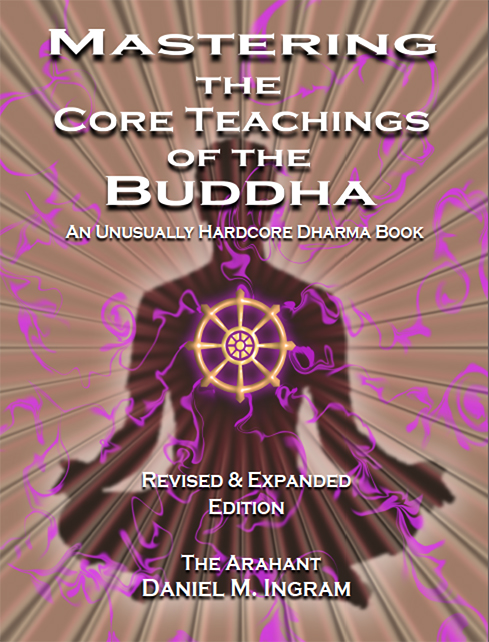Back to the Vajrayana Story
← The Cessation of Perception and Feeling (Nirodha Samapatti) | The Simple Model →
All right, now that I have set all that up, I can finish my little story about how I came to appreciate the Vajrayana models that involve seeing emotions in the clear light of wisdom, as part of the luminous field of natural manifestation, as an integral part of awakening, and not something to reject. Shortly after I got what I think of as third path, I attained nirodha samapatti. Bill Hamilton talked about nirodha samapatti a lot, as did Bhante Gunaratana, and I could tell that both masters really liked it, so I read everything I could find on it, which wasn’t much, and went for it. I poured energy into my shamatha skills. I learned to walk from the insight side of practice to the concentration side of practice and back again, trying to find that right balance of the two that would allow it to occur. I resolved to attain it again and again. I got it after about a month of hard work. As that was part of the standard criterion I had been brought up on for third path, that pretty much clinched it for me: that and the radical transformation of the baseline way I perceived the world. However, there was a problem …
As you may recall, third path in the standard Theravada ten fetter model involves the elimination of all forms of greed and hatred (other than desire for jhanic attainments), but I still had emotions including lust and anger. Those weren’t supposed to be occurring, and yet they were. They were perceived very differently and in a way that seemed “right”, as now they mostly (but not quite completely) seemed to be just a part of the natural field of experience, like textures of space that were happening on their own. This seemed very important, very profound, extremely relevant, and yet the models I had to work with suddenly didn’t describe my experience at all. This caused heavy-duty internal conflict, as previously the models seemed rock-solid, predictive, and useful. I knew that what I was experiencing was related to wisdom, and yet the textual sources, friends, and teachers I had access to didn’t seem to mention anything like what was happening.
Thus, I branched out and started reading more broadly, poring through texts to try to find someone who was talking about this stuff, and luckily I found the brilliant works of the late Chögyam Trungpa Rinpoche, and his book Journey without Goal, specifically chapter nine, “The Five Buddha Families”, and suddenly I felt like I was not some sort of freak, as here was someone whose explanation made so much sense to me. Searching around in that general neck of the woods, I found Dzogchen, along with other books on tantra, and suddenly I realized that I had chanced upon a very Vajrayana way of understanding practice and experiencing reality by methods that were relentlessly Theravadin.
Those books were a very useful and empowering launching point for a project that would finally be completed some years later. My practice during those years often emphasized taking on just the whole sense field as object however it occurred with basically no agenda except that the field be known as it was, where it was, on its own, including any emotion, any thought, any mind state, anything. That type of totally nondiscriminating wisdom which embraced the whole vast world of experience turned out to be extremely liberating. I personally think that would have been much harder to accomplish had I not tossed aside models that tempted me to mimic an emotionally repressed or robotic state.
This way of viewing the path, in which all emotions are considered opportunities to bring light and wisdom to the way we perceive patterns of experience, also really helps in the Dark Night stages of any path, both before and after stream entry. Imagine that you are being given a thorough tour of your entire brain, heart, gut, body, the entire range of your life and sensate world, and, during that tour, you have the opportunity to bring awakening to each and every part of your reality, to hard-wire it into yourself, such that no matter what happens, the habit of clear seeing will naturally apply to that aspect of these natural occurrences. Thus, in each of the stages of practice, with each experience that arises, you can confidently say, “Ah! Here is this part that we can also awaken, just as we have done with so many parts before! What a joyous opportunity to have had this arise that we may thoroughly engrain the habit of recognizing its inherent nature and intrinsic clarity!” That was the gift that exposure to the Vajrayana gave me, and for that I am extremely grateful, as it finally allowed me to throw wide open the doors that, with even just a hint of hesitation or subtle prejudice against any part of experience, might never have opened. These explorations finally led me to what I call “the simple model”.
← The Cessation of Perception and Feeling (Nirodha Samapatti) | The Simple Model →

